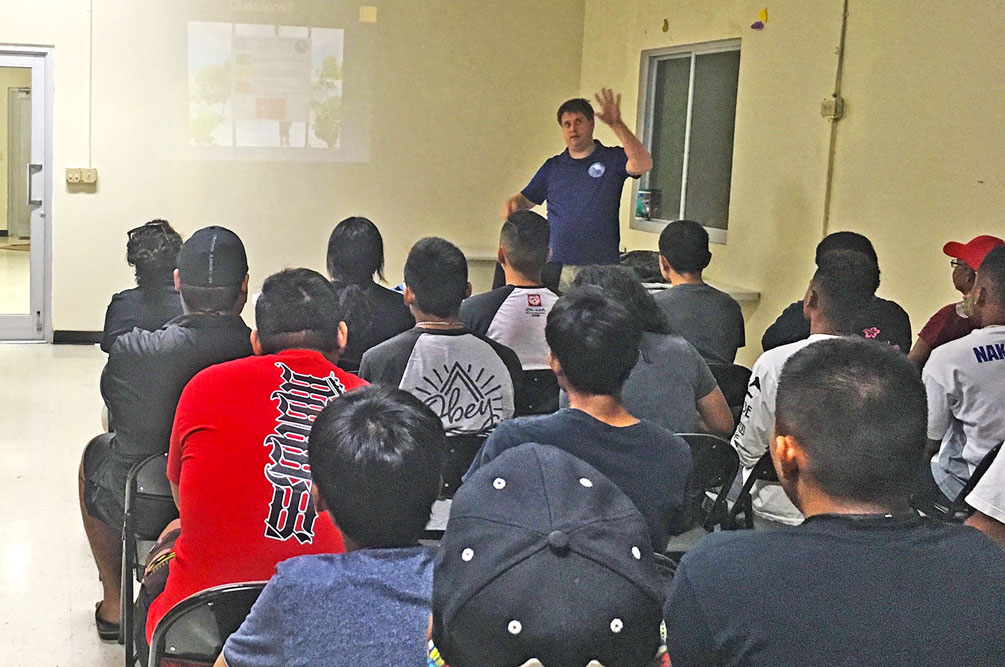What do red flags mean in beach advisories?

Members of the Saipan Fishermen’s Association Youth Fishing Club listen as Bureau of Environmental and Coastal Quality’s Larry Maurin speaks last Saturday at the Head Start center on Capital Hill. (Iva Maurin)
Young members of a fishing group learned as much Saturday at the Head Start center on Capitol Hill, with a representative of the Bureau of Environmental and Coastal Quality explaining the meaning of red flags in beach advisories and the impacts of water quality on fish and fishing in the CNMI.
Larry Maurin, BECQ water quality surveillance and non-point source program manager, emphasized with members of the Saipan Fishermen’s Association’s youth fishing club that water quality is important for fish and fish habitat.
“If it is unhealthy to go fishing for people, then people aren’t going to want to go fishing. So we want to encourage people to fish and to keep fish healthy and keep fish habitat healthy,” he said.
Through this partnership between SFA and BECQ, via its Division of Environmental Quality, the young fishermen learned about the processes that come with the monitoring of beaches, as well as in coming up with beach advisories. The importance of understanding red flags, particularly how it affects both people and the marine species were also discussed.
BECQ samples beaches and coastal areas in the CNMI for bacteria concentration. The standards they have are U.S. Environmental Protection Agency-recommended standards for bacteria.
“When we see bacteria levels that exceed the standards, it can be unsafe to come into contact with those waters, so you can become sick. If you touch the water, especially if the water gets in your nose, mouth, ears, or cuts, it can cause rashes, skin infections, gastrointestinal illness, respiratory illness,” Maurin said.
When the water quality results from a beach site or other monitored stream site exceed the standards, a “red flag” advisory is posted in the area, and announced in news, social media, and on the DEQ website.
“A red flag is an advisory that tells the public that it may be unsafe to swim or fish in this area, so we advise the public not to swim or fish in the area for 48 hours after we post the red flag,” he added.
BECQ advises the community to be aware of the advisories as they are posted to keep everyone healthy when going fishing, or going to the beach.
To be alerted to these advisories, check http://deq.gov.mp, https://www.facebook.com/cnmi.waters/, or join the email list via waterqualityreport@becq.gov.mp.
Set to run for eight months, the SFA Youth Fishing program supports SFA’s vision to give the youth an understanding of ocean preservation and the fishery industry in the CNMI. For more information, check SFA at https://www.facebook.com/sfacnmi/.























